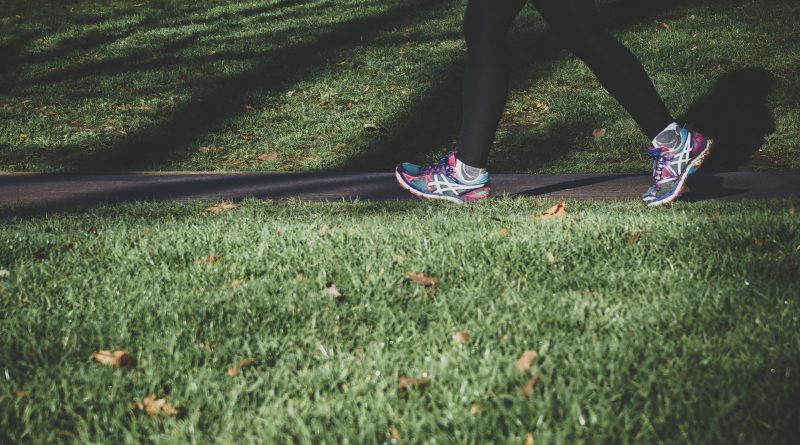Eleven Tips for Staying Fit as You Age
Long before you reach retirement age, your body can start to undergo the effects of a sedentary lifestyle, work-related strain, old injuries, and bad habits. The best time to start increasing your fitness and health is now. The longer you wait, the more likely you are to experience painful injuries and the harder it will be to maintain your fitness and activity level. Here are some of the best ways to continue to stay fit as you age.
Eat a Vitamin-Rich Diet
Vitamin-rich diets are good for all parts of the human body. As you consider how to support your muscles, tendons, and bones so you can continue with an active lifestyle, you shouldn’t neglect to consider diet. If you are concerned that you aren’t getting all the vitamins and minerals that you should be, the best way to get these is through your food. However, many people still struggle to incorporate the best foods so it can give peace of mind to take supplements. Taking muscle and joint supplements like Physio Flex Pro is a good way to make sure your body gets everything it needs.
Strength Training
Strength training is a good way to help your body stay fit and active, especially as you age. In middle age and sometimes even before, the muscles and bones can start weakening if they aren’t exercised regularly. Daily light strength training can help to counteract our tendency to a sedentary lifestyle. While many people enjoy bodybuilding, good results can also be achieved with milder versions of similar exercises. These don’t usually require expensive equipment or weight systems and can be done at home with basic supplies.
Practice RICE for Injuries
If you get an injury, inflammation like tendonitis, or a painful joint, don’t push it. You are likely to injure yourself further and cause lasting damage that will crop up again later in life. Instead, practice the RICE method until the pain and swelling are gone. RICE stands for rest, ice, compression, and elevation.
Stretching Exercises
Yoga, Pilates, and other stretching exercises can help prevent injuries by keeping your muscles and tendons flexible. Many injuries that people suffer as they begin aging occur because they have lost flexibility. When this happens, a sudden twist or pull can cause damage because the muscles and tendons are not able to adjust to the unexpected movement. In addition, the body will not be able to compensate as quickly during a fall or twist, making it more likely to experience other injuries, such as broken bones and bruising. When beginning a stretching exercise make sure that you warm up first, so you don’t damage your muscles, and don’t begin a new program until you have cleared it with a medical professional.
Start New Activities Slowly
Any time you begin a new exercise program or take your current program to the next level, ensure that you start slowly until you see how your body reacts. If you are starting a new activity to prevent pain and keep your body active and flexible, the last thing you want to do is cause new injuries or strains because you push too hard or start too quickly.
Warm Up Exercises
Warming up is an important part of any exercise program. It helps prevent injury and can form part of the program itself. Your doctor or trainer can show you the best ways to warm up in order to stay safe and active.
Massage Therapy
Massage can be a good way to relieve muscle strain and the pain from injuries, both old and new. Professional massage therapists and physical therapists can use massage as more than just a relaxing treatment. It can also promote healing in specific tissues, ease tight muscles that can contribute to new injuries, and help heal tendonitis, sprains, and strains.
Focus on Strong Legs
Your leg health can impact many other parts of your body, and strong legs can help you remain active without injury or pain. Weak legs can contribute to foot, leg, and back pain. Your knee is a flexible joint that is easily injured, and it has to be supported with strong leg muscles to remain healthy. Your back is also affected by leg strength as well as the flexibility in your hamstring and other leg tendons. If your leg muscles and tendons are weak and tight, it can contribute significantly to back pain.
Swim Regularly
Swimming is a great exercise because it takes the pressure off the joints, requires core muscles to be used, and is good for heart and lung exercise. Swimming is especially good for people who need to exercise without adding stress to injuries or painful joints and muscles.
Relieve Work-Related Pain
Work-related pain like carpal tunnel, scoliosis, and other posture-related injuries can be relieved or prevented with certain exercises and stretches. Posture support and lifestyle change can also help prevent these injuries.
Don’t Forget Balance Exercises
While you may see balance exercises as something for people who are recovering from severe injury or as exercises for the elderly, they can actually be helpful for people of all ages. Children naturally exercise their balance when they play on playgrounds, jump, climb, spin, and swing. As we get older, we spend less time doing these balance-improving movements. Balance exercises, along with strength and flexibility exercises, can help present dangerous falls which become more likely as we get older. These falls are not limited to the elderly, however, and adults of all ages can benefit from these balance-building movements.
Conclusion
No matter why you want to stay fit and active, you will achieve better results if you focus on a balanced whole-body approach incorporating stretching, strength training, a healthy diet, aerobic exercise, and supplements.

